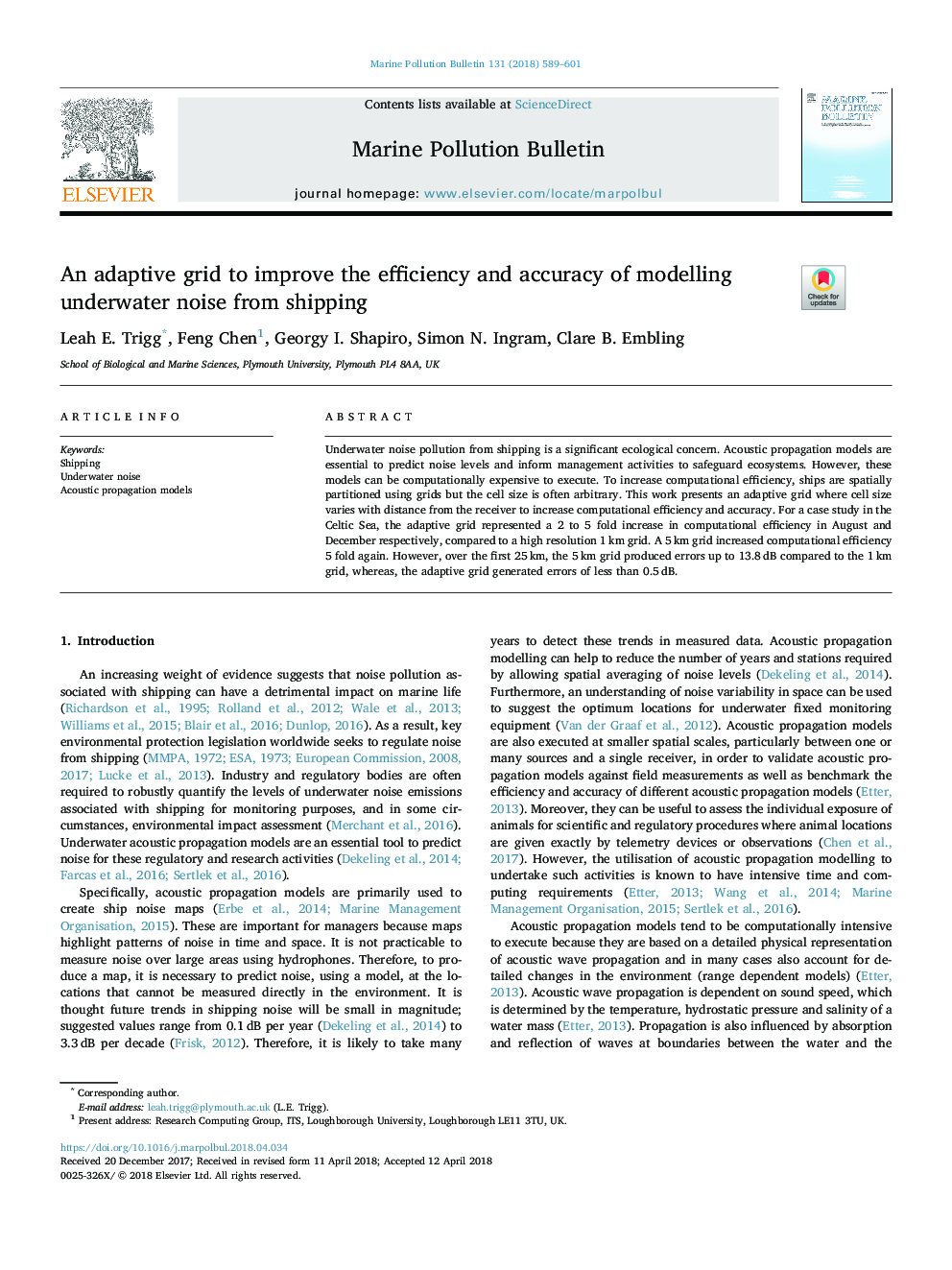| Article ID | Journal | Published Year | Pages | File Type |
|---|---|---|---|---|
| 8871067 | Marine Pollution Bulletin | 2018 | 13 Pages |
Abstract
Underwater noise pollution from shipping is a significant ecological concern. Acoustic propagation models are essential to predict noise levels and inform management activities to safeguard ecosystems. However, these models can be computationally expensive to execute. To increase computational efficiency, ships are spatially partitioned using grids but the cell size is often arbitrary. This work presents an adaptive grid where cell size varies with distance from the receiver to increase computational efficiency and accuracy. For a case study in the Celtic Sea, the adaptive grid represented a 2 to 5 fold increase in computational efficiency in August and December respectively, compared to a high resolution 1â¯km grid. A 5â¯km grid increased computational efficiency 5 fold again. However, over the first 25â¯km, the 5â¯km grid produced errors up to 13.8â¯dB compared to the 1â¯km grid, whereas, the adaptive grid generated errors of less than 0.5â¯dB.
Keywords
Related Topics
Physical Sciences and Engineering
Earth and Planetary Sciences
Oceanography
Authors
Leah E. Trigg, Feng Chen, Georgy I. Shapiro, Simon N. Ingram, Clare B. Embling,
